
How to Use Bveeta AMR Charging Docking port: Examples, Pinouts, and Specs
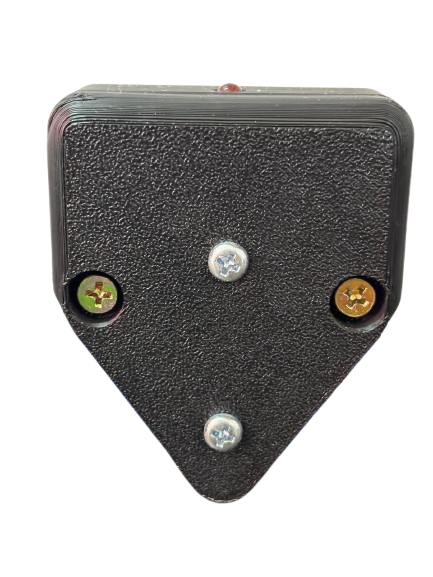
 Design with Bveeta AMR Charging Docking port in Cirkit Designer
Design with Bveeta AMR Charging Docking port in Cirkit DesignerIntroduction
The Bveeta AMR Charging Docking Port by Bizbot Technology is a specialized docking station designed for Autonomous Mobile Robots (AMRs). This component ensures that AMRs can recharge their batteries efficiently, enabling continuous operation and maximizing productivity. The docking port is engineered to provide a reliable and safe charging solution, making it an essential component in automated environments such as warehouses, manufacturing plants, and distribution centers.
Explore Projects Built with Bveeta AMR Charging Docking port
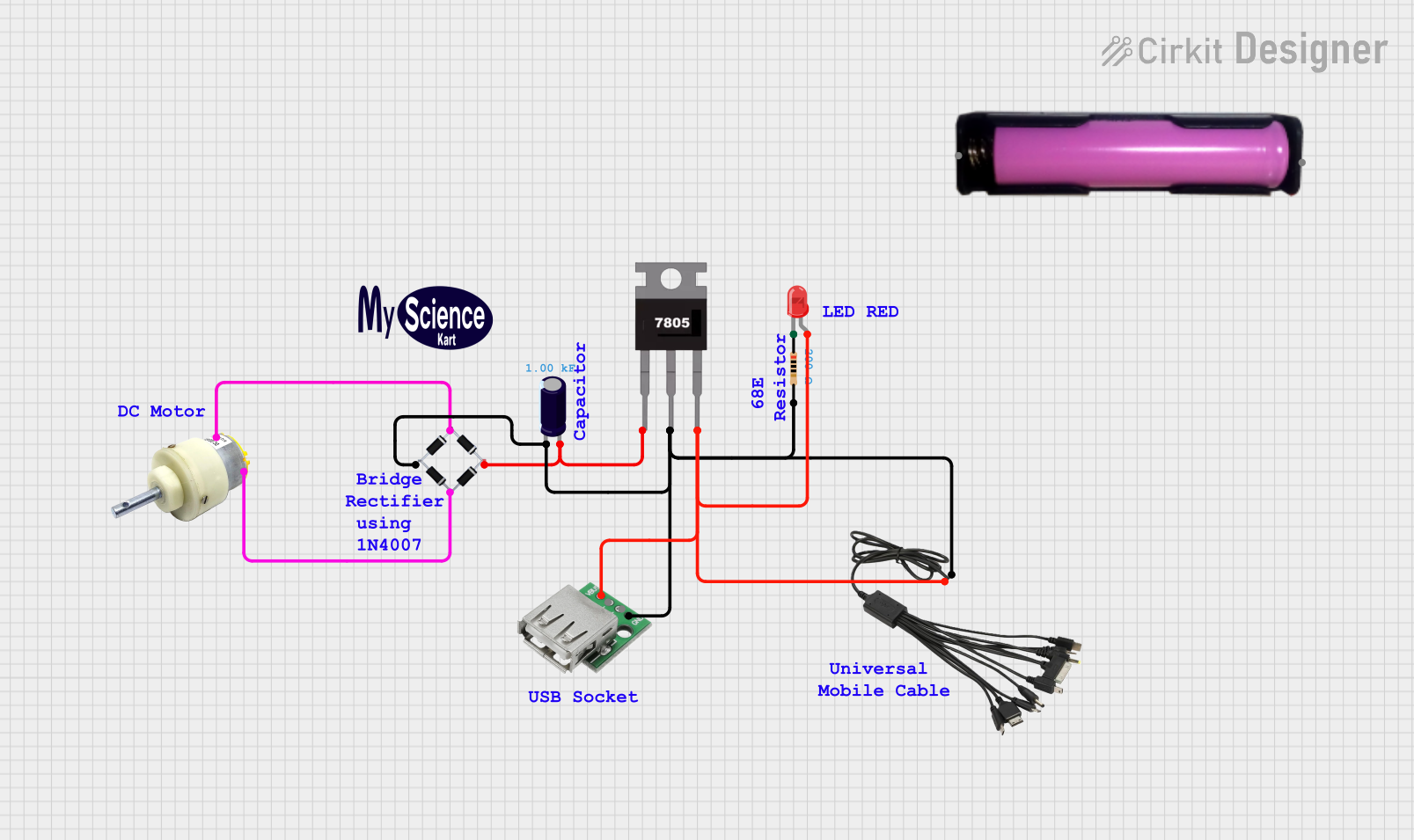
 Open Project in Cirkit Designer
Open Project in Cirkit Designer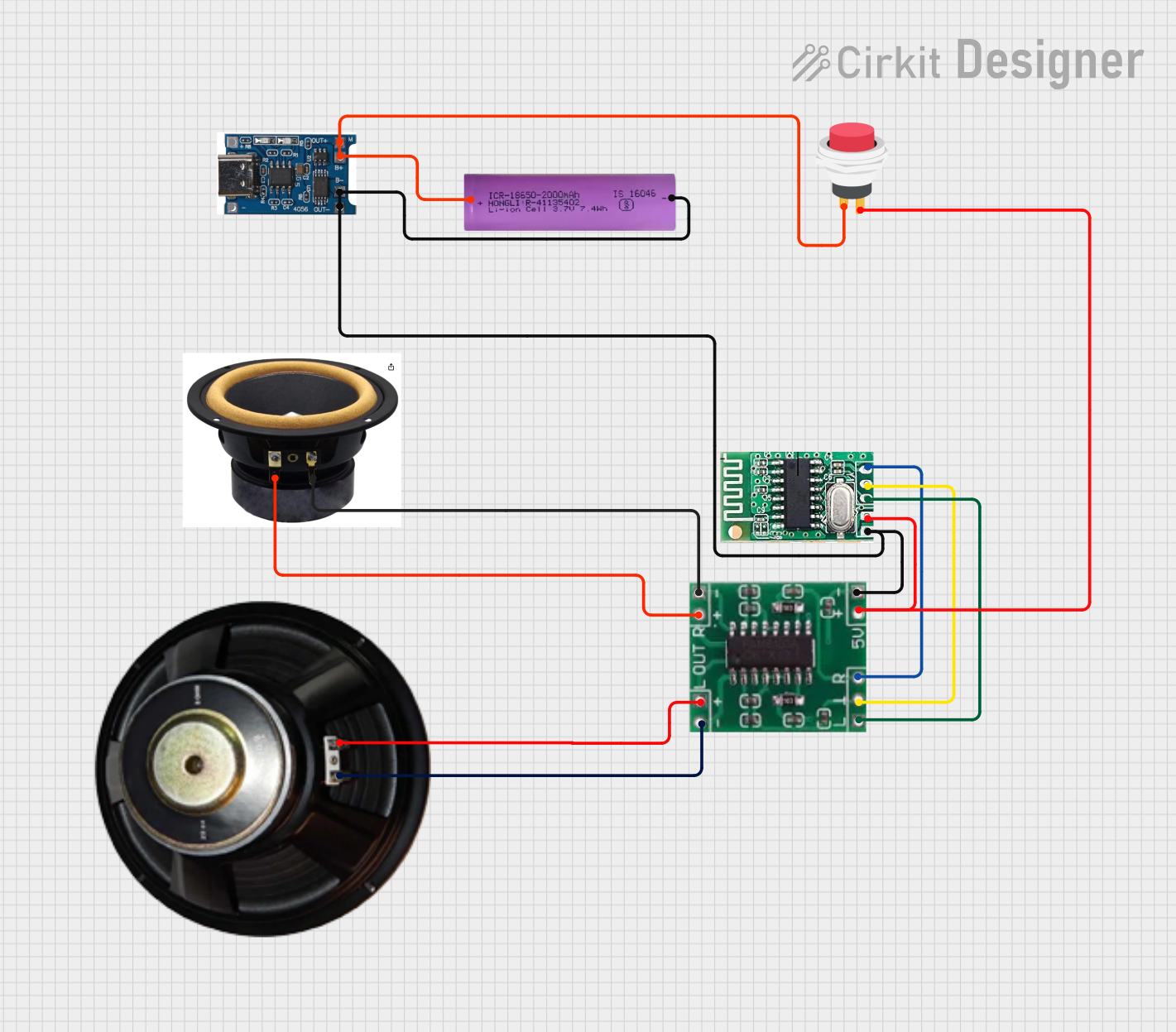
 Open Project in Cirkit Designer
Open Project in Cirkit Designer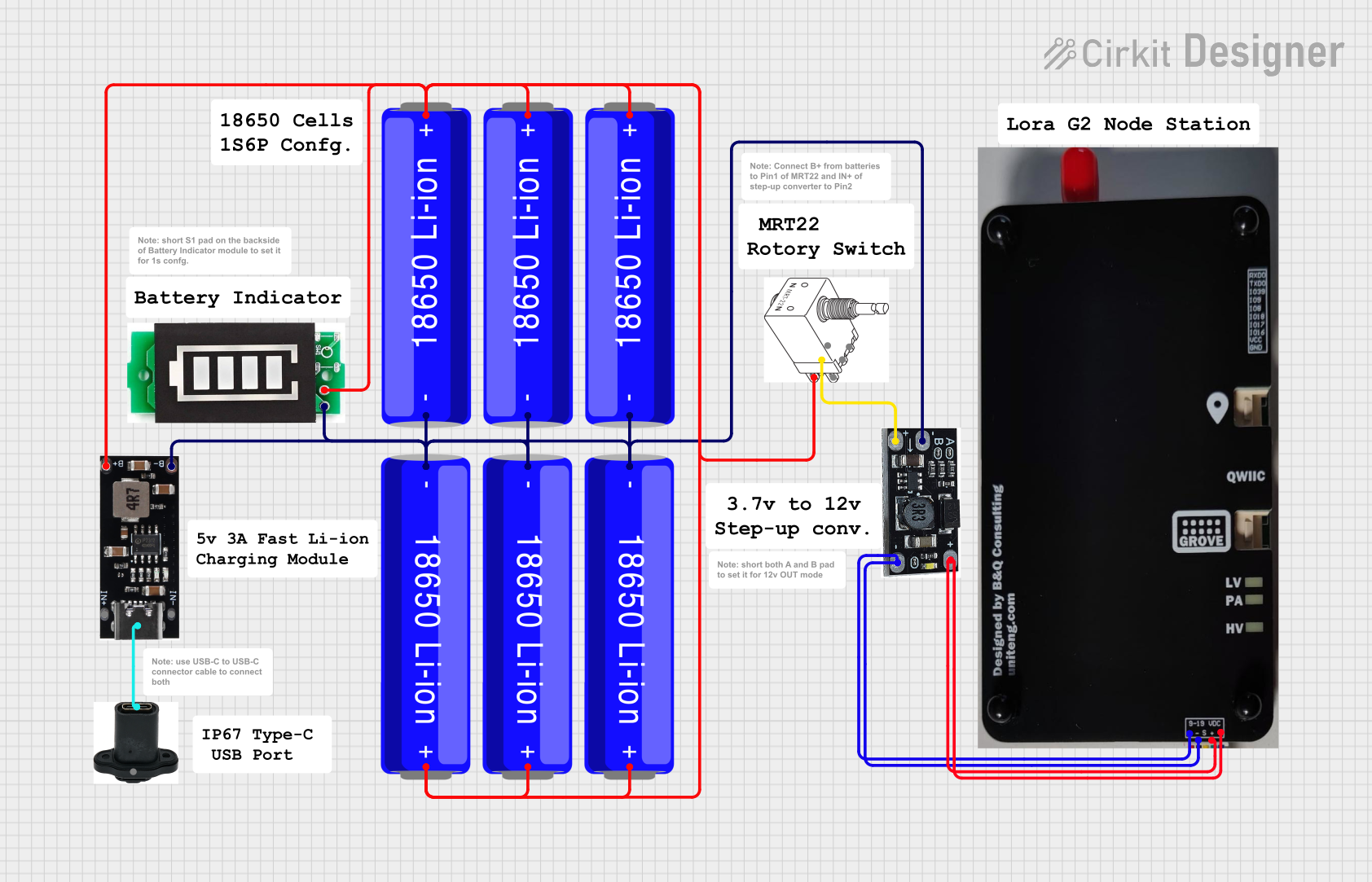
 Open Project in Cirkit Designer
Open Project in Cirkit Designer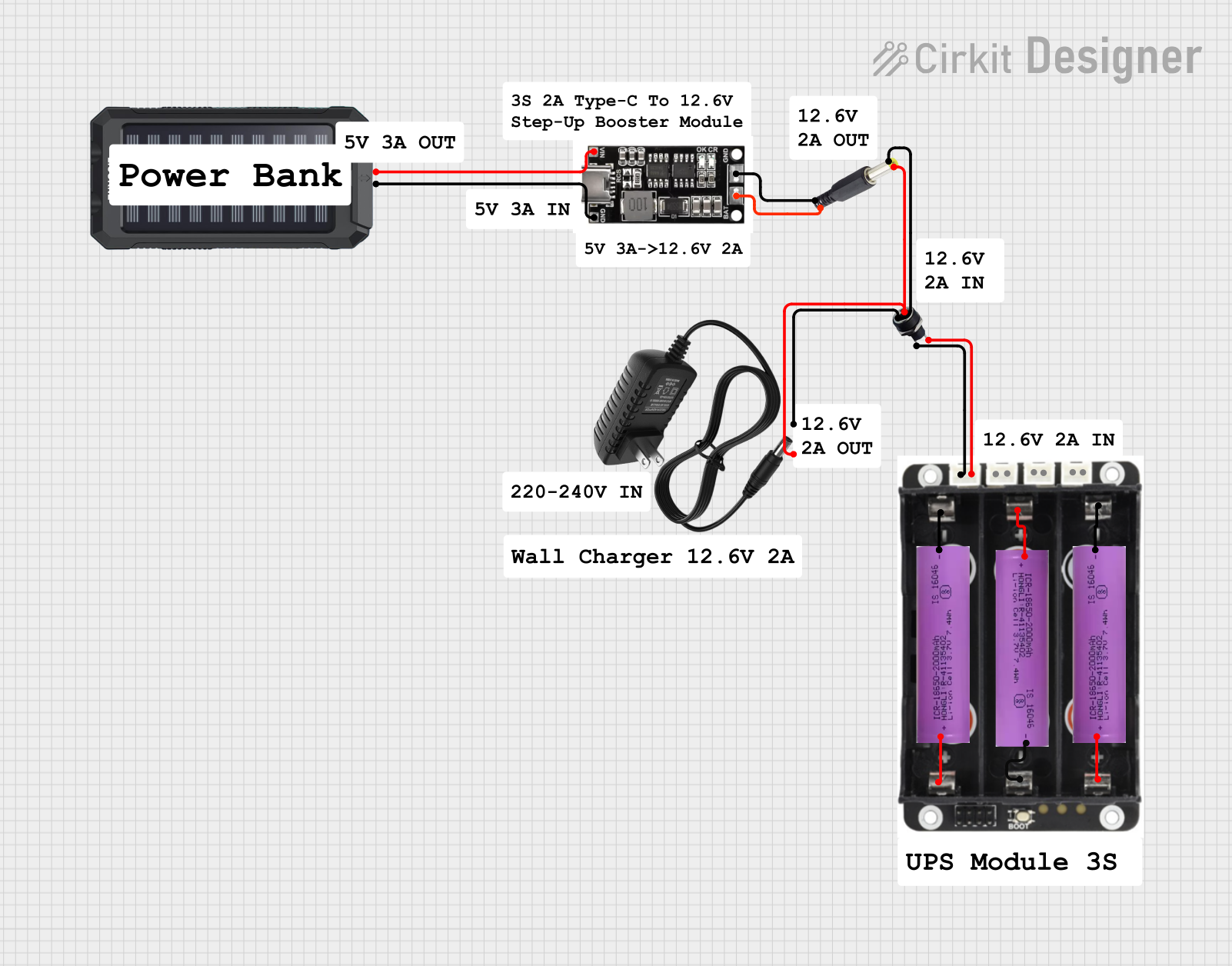
 Open Project in Cirkit Designer
Open Project in Cirkit DesignerExplore Projects Built with Bveeta AMR Charging Docking port

 Open Project in Cirkit Designer
Open Project in Cirkit Designer
 Open Project in Cirkit Designer
Open Project in Cirkit Designer
 Open Project in Cirkit Designer
Open Project in Cirkit Designer
 Open Project in Cirkit Designer
Open Project in Cirkit DesignerTechnical Specifications
Key Technical Details
| Parameter | Specification |
|---|---|
| Manufacturer | Bizbot Technology |
| Part ID | Bveeta AMR Charging Docking Port |
| Input Voltage | 24V DC |
| Output Voltage | 24V DC |
| Maximum Current | 10A |
| Power Rating | 240W |
| Charging Efficiency | 95% |
| Operating Temperature | -10°C to 50°C |
| Dimensions | 150mm x 100mm x 50mm |
| Weight | 500g |
Pin Configuration and Descriptions
| Pin Number | Pin Name | Description |
|---|---|---|
| 1 | VCC | 24V DC Input |
| 2 | GND | Ground |
| 3 | CHG_STATUS | Charging Status Indicator (High when charging) |
| 4 | TEMP_SENSE | Temperature Sensor Input |
| 5 | COMM_TX | Communication Transmit (for data exchange) |
| 6 | COMM_RX | Communication Receive (for data exchange) |
Usage Instructions
How to Use the Component in a Circuit
- Power Connection: Connect the VCC pin to a 24V DC power supply and the GND pin to the ground.
- Charging Status: Use the CHG_STATUS pin to monitor the charging status. This pin will be high when the AMR is charging.
- Temperature Monitoring: Connect a temperature sensor to the TEMP_SENSE pin to monitor the temperature of the docking port.
- Communication: Use the COMM_TX and COMM_RX pins for data exchange between the docking port and the AMR or a central control system.
Important Considerations and Best Practices
- Ensure Proper Ventilation: The docking port should be placed in a well-ventilated area to prevent overheating.
- Regular Maintenance: Periodically check the connections and clean the docking port to ensure optimal performance.
- Safety Precautions: Always follow safety guidelines when handling electrical components to avoid accidents.
Troubleshooting and FAQs
Common Issues and Solutions
Docking Port Not Charging
- Solution: Check the power supply connection and ensure that the VCC and GND pins are properly connected. Verify that the input voltage is 24V DC.
Charging Status Indicator Not Working
- Solution: Ensure that the CHG_STATUS pin is correctly connected to the monitoring system. Check for any loose connections or damaged wires.
Overheating
- Solution: Ensure that the docking port is placed in a well-ventilated area. Check the temperature sensor connection and ensure it is functioning correctly.
FAQs
Q1: Can the Bveeta AMR Charging Docking Port be used with other AMR models?
- A1: Yes, the docking port is designed to be compatible with various AMR models. However, it is recommended to check the specifications of the AMR to ensure compatibility.
Q2: What is the maximum charging current?
- A2: The maximum charging current is 10A.
Q3: How can I monitor the charging status remotely?
- A3: You can use the COMM_TX and COMM_RX pins to communicate with a central control system and monitor the charging status remotely.
Arduino UNO Integration Example
If you are using an Arduino UNO to monitor the charging status and temperature, you can use the following code:
// Define pin connections
const int chgStatusPin = 2; // Charging status pin
const int tempSensePin = A0; // Temperature sensor pin
void setup() {
// Initialize serial communication
Serial.begin(9600);
// Set pin modes
pinMode(chgStatusPin, INPUT);
pinMode(tempSensePin, INPUT);
}
void loop() {
// Read charging status
int chgStatus = digitalRead(chgStatusPin);
// Read temperature sensor value
int tempValue = analogRead(tempSensePin);
// Convert temperature sensor value to Celsius (example conversion)
float temperature = (tempValue / 1024.0) * 500.0;
// Print charging status and temperature
Serial.print("Charging Status: ");
Serial.println(chgStatus == HIGH ? "Charging" : "Not Charging");
Serial.print("Temperature: ");
Serial.print(temperature);
Serial.println(" °C");
// Wait for 1 second before next reading
delay(1000);
}
This code initializes the charging status and temperature sensor pins, reads their values, and prints the charging status and temperature to the serial monitor.
By following this documentation, users can effectively integrate and utilize the Bveeta AMR Charging Docking Port in their automated systems, ensuring efficient and reliable operation of their AMRs.